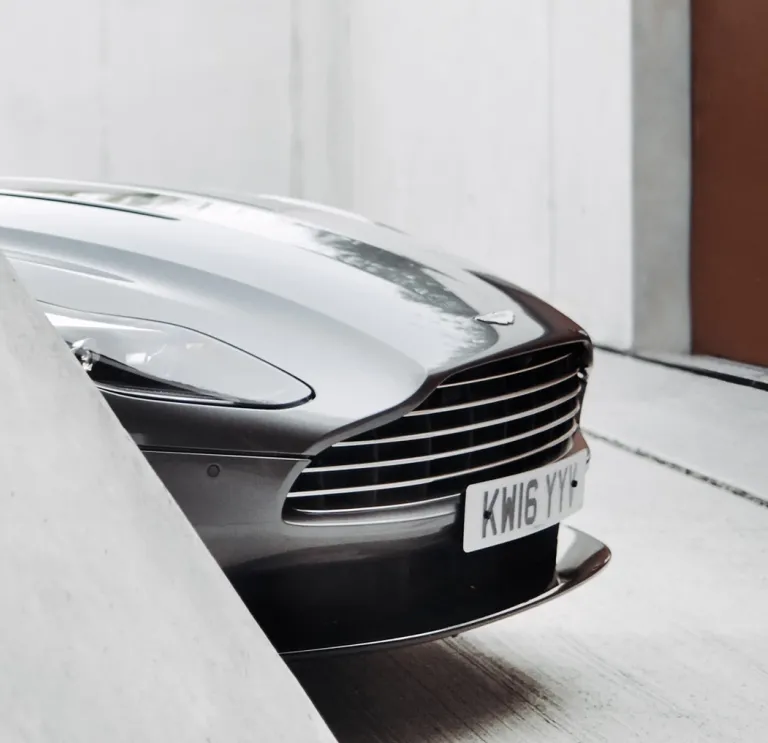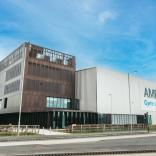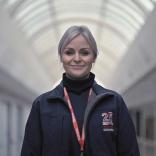These companies range from some of the world’s largest and recognisable automotive brands, to revolutionary Welsh-based start-ups like Riversimple - taking pole position in the race to develop viable alternative fuel powered cars. However, there are many other teams in the race to make sure Wales is on the starting line of a new automotive era, let’s take a look.
Toyota
It’s impossible to think about modern automotive advancements without immediately thinking of Toyota, the brand that first brought hybrid engine technology to the mainstream commercial market. What you might not realise is that today, Wales is the birthplace of some of the brands most advanced production engines.
That story began in 1991, when Toyota moved into its Deeside Engine Plant. In 1992, that site employed just 70 people, but not even Toyota could have predicted the site would become the production powerhouse it is today. Now employing over 600 highly trained staff, the energy-efficient, state-of-the-art eco-plant produces around 1,300 engines every day. That means an engine is born every 44 seconds. An engine that may be shipped as far as Europe, South America, Africa and Asia. It’s no wonder that Deeside became the first overseas Toyota plant to produce hybrid electric engines. Or, that 65% of its build is now for hybrid electric engines destined for the Auris model produced in the UK and for the new C-HR model produced in Turkey. If that isn’t enough, Deeside engines and components are also exported to Japan, South Africa and Brazil.
Aston Martin
Racing pedigree, synonymous with automotive style, Aston Martin is the brand enthusiasts aspire to buy and a company that nations compete to attract. And in 2016, after considering 20 locations worldwide to manufacture the new, sports crossover – the DBX, Aston Martin announced that its latest model will start to roll off the production line in St Athan from 2019.
A departure from its race inspired line, the all new DBX is a first for the brand that can boast James Bond as a customer. The fact that this will be its first sports crossover vehicle was not the initial challenge Aston Martin faced with its development. It was an issue of space. The manufacturer’s Warwickshire facility stands at full capacity for the company’s production of elite sports cars. The solution was found at the former Ministry of Defence aircraft base at St Athan, a 90-acre site that is perfect for the development of the new DBX model, over 80 per cent of which will be exported.
However, when competing against international rivals, Wales didn’t just rely on having room for the British multinational. It has the total package: a highly-skilled talent pool of high quality labour in the south Wales area; access to good road and rail links, ports and airports, and; a government that is actively involved in attracting inward investment.
Riversimple
If you’re looking to see what the car of the future might look like, you probably don’t need to look further than Powys, the home of Riversimple. The company has spent the last 15 years developing the technology that has led to its carbon-fibre Rasa vehicle. The Rasa is a two-seater ‘network electric’ car, powered by a hydrogen fuel cell. With a lightweight carbon fibre monocoque chassis totalling at just 40kg propelled by a hydrogen fuel cell, the company’s flagship vehicle, the Rasa, is like no car you’ve ever seen. Using electric motors and regenerative breaking that captures 50% of the energy that would otherwise be lost, the Rasa ensures you get the most from its hydrogen cell. Technical innovation isn’t the only thing to set Riversimple apart from the mainstream - it’s the fact that while you can drive a Rasa, you’ll never own one. Instead, RiverSimple will sell mobility as a service. The company has created a pricing structure that enables customers to pay a single monthly fee that covers everything – the car, the maintenance, the insurance, the fuel. At the end of that contract, the vehicle is returned and then supplied to the next customer.
Haydale
How does the pencil on your desk link to your future car? Well, that’s a question for Ammanford-based, Haydale, and the answer is graphene. At just 1mm thick, this wonder material is 200 times stronger than steel. Not to mention that graphene is an excellent conductor of electricity and heat, in addition to having the ability to act as a barrier to helium and hydrogen.
A partnership with Briggs Automotive has seen Haydale make components for the BAC Mono, a single-seat supercar that has graphene in its body panels. Why? Because in the world of racing weight is everything, and thanks to Haydale, the BAC Mono graphene enhanced parts make the car stronger, stiffer, lighter and more fuel-efficient.
The Future Today
If you can’t wait to see the cars of the future that Wales is working to make a reality, you’re in luck. Arriving in Swansea this July, tech.driven, the first of its kind open-entry open technology rally will showcase the very latest innovations in driving technology being developed in the UK. The one-day Rally from London to Swansea, is designed to unveil the most innovative developments in automotive technology.
On 26 July tech.driven will see major car manufacturers join the starting line to show off their latest automotive innovations. However, the race is not just for those creating the cars of the future. As the UK's first open-entry tech rally this event is for any company that puts technology and innovation at its core, that thinks big about the future and how it can shape it.
Competitors can select to take part in one of four specialist categories: electric, hybrid, alternative fuel, and innovative tech. Designed to allow teams to show their visions for the cars of tomorrow, the rally will see competitors drive from the heart of London’s tech scene in Shoreditch, but for your chance to see tomorrow’s automotive tech today, just head to the finish line at the home of the DVLA in Swansea.




